Posts Tagged ‘flies’
{{start}}
{{end}}

{{+1}}Geehi beetle{{-1}}
{{start}}
One of the key elements of this fly that has been overlooked in many fly patterns I have seen id the choice of the front hackle. Make sure its a 'cocky-y-bonddu' type hackle i.e. a ginger hackle with a black centre. The black centre of the hackle when wound in touching turns to the eye of the hook extends the beetle body along the full length of the shank of the hook and I an confident that is one of the keys to the success of this fly.{{end}}
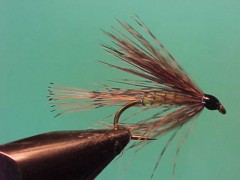
{{+1}}Bredbo variant MKI – Chatto’s original{{-1}}
{{start}}
The Bredbo fly is accredited as being the first Australian designed and made fly and whilst the originator is not known with certainty there is highly persuasive evidence that suggests that it was conceived around 1896 as a grass hopper imitation for targeting fish on the Bredbo river just outside of Cooma NSW. The evidence points to the fly being created by Mr C.R. Burnside and Dr A.J. Brady who along with Howard Joseland are amongst the pioneers of fly fishing for trout in New South Wales .{{end}}
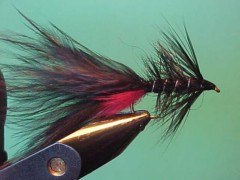
{{+1}}Mark II woolly bugger{{-1}}
{{start}}
The MK 2 woolly buggers evolved from standard black and olive woolly buggers as a fly that would imitate an American frog that had bright red between its hind legs. The red is a great trigger point and I find the MK2 as a great generalist search pattern. In southern climes the hot spot is tied in any of the 'roe' colours and is widely accepted as one of the best early season search pattens.{{end}}
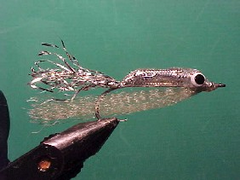
{{+1}}Superhair rattler{{-1}}
{{start}}
This is a good alternative to the zonker rattler particularly for estuary species. It lends itself to fishing on a fast sink line and a jerky active retrieve with plenty of stops. It's also a good idea to count the fly down so that you can identify what depth they are holding at.{{end}}
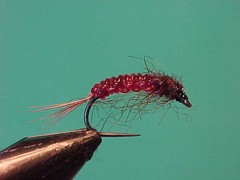
{{+1}}Flat knitted nymph{{-1}}
{{start}}
Because the nymphs of many mayflies and caddis spend a good part of their life cycle living under rocks in both still and running water its not surprising that many have taken on a relatively flat form. This knitted grub has a relatively flat body mimicking many of the naturals and also has plenty of structure on the body suggesting the various body segments.{{end}}
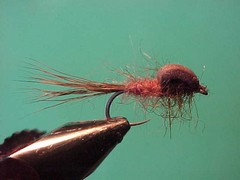
{{+1}}Floating nymph{{-1}}
{{start}}
This nymph applies elements of each of these two principals of science. The materials are all as buoyant as possible. This includes the tail which is deer hair and of course "hollow' and the closed cell foam which has tiny bubbles of air trapped within its membrane. It also has a reasonable "foot print" made up of the tail, and teased out seals fur body and thorax. Seals further adds a further benefit to the fly in that with a couple of brisk false casts it easily sheds water.{{end}}
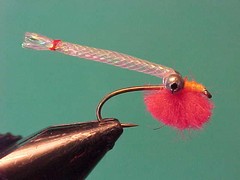
{{+1}}Egg sac fly{{-1}}
{{start}}
Around 50 days after eggs have been lay sac fry hatch. These fry are poor swimmers because of the sac and consequently the imitation should be fished amongst the rubble on the stream bed or on the dead drift. Fish them under an indicator and respond to slightest irregular movement in the indicator in the same way you would if nymph fishing.{{end}}
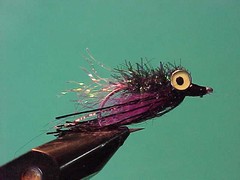
{{+1}}Bass vampire{{-1}}
{{start}}
The fly is particularly useful in larger water and can be fished quite deep. For inactive fish John recommends a slow retrieve and even pauses of up to 15 seconds. If fish are active a range of faster stripping actions will yield success. Whilst the black and purple Vampire gets the most press its worth following John's lead and experimenting with different colours for different fisheries.{{end}}
{{+1}}Parasol emerger{{-1}}
{{start}}
The authors of “The Fly Tiers Bench-side Reference” previewed this new concept in emerger flies in the Fall 2002 issue of Fly-fishing & Tying Journal. Its shown here tied on a “Steve's Nymph” but you can easily adapt this concept to your favorite nymph.{{end}}
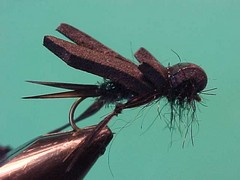
{{+1}}Foam cricket{{-1}}
{{start}}
If you fish fast water and need a very buoyant hopper or a buoyant fly to support a nymph try this one. Trout love crickets probably because that represent a pretty big serve of protein.{{end}}













